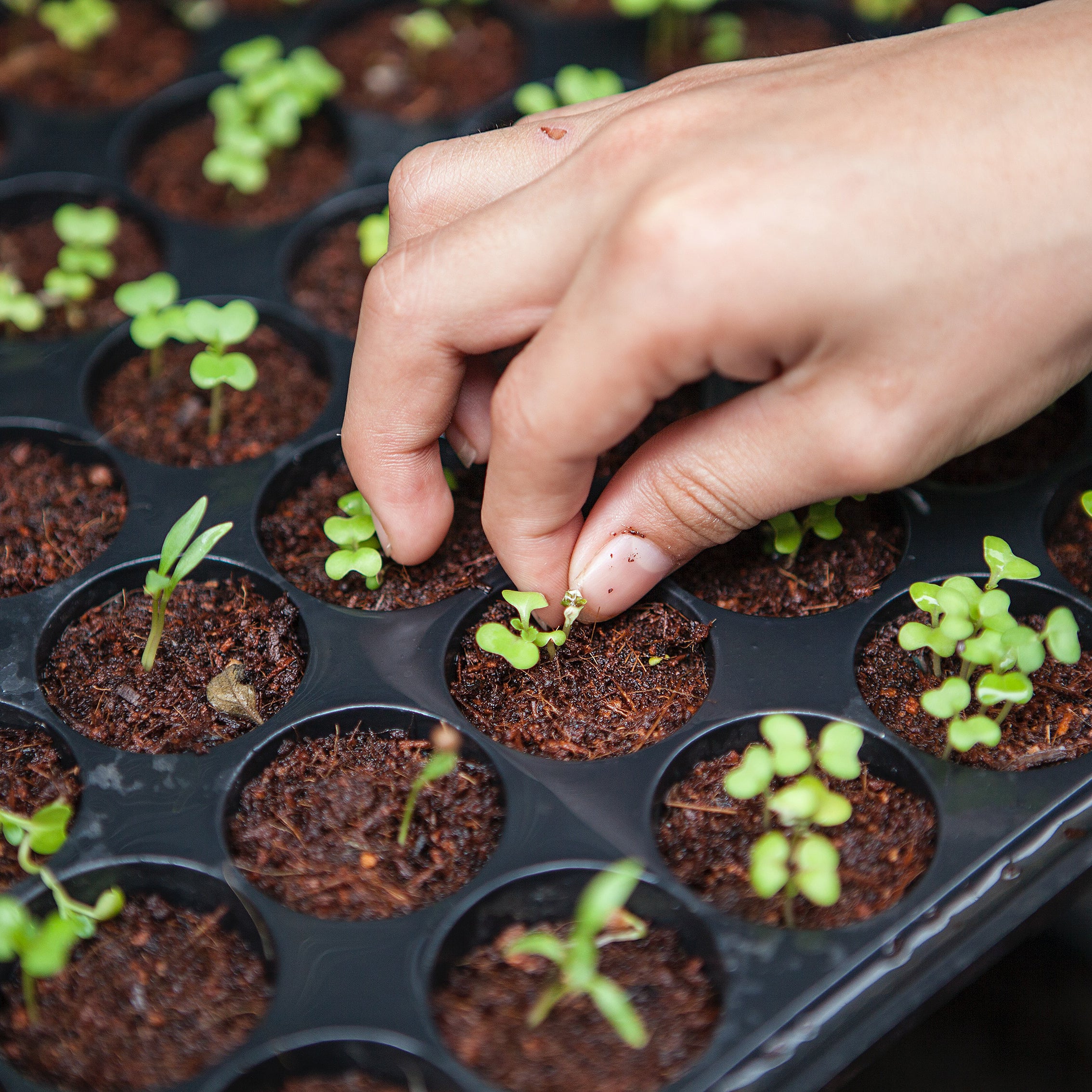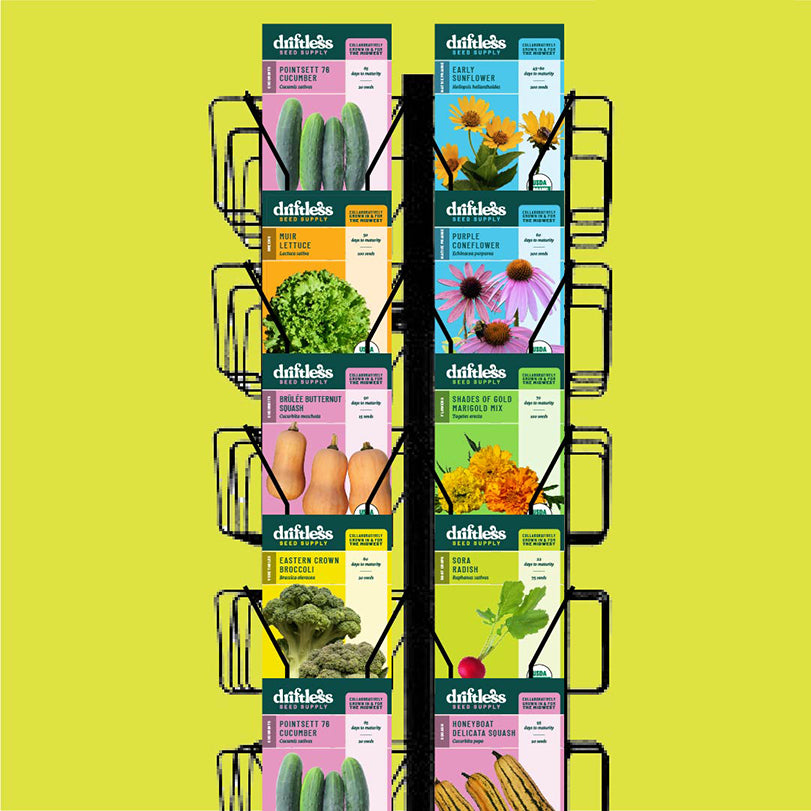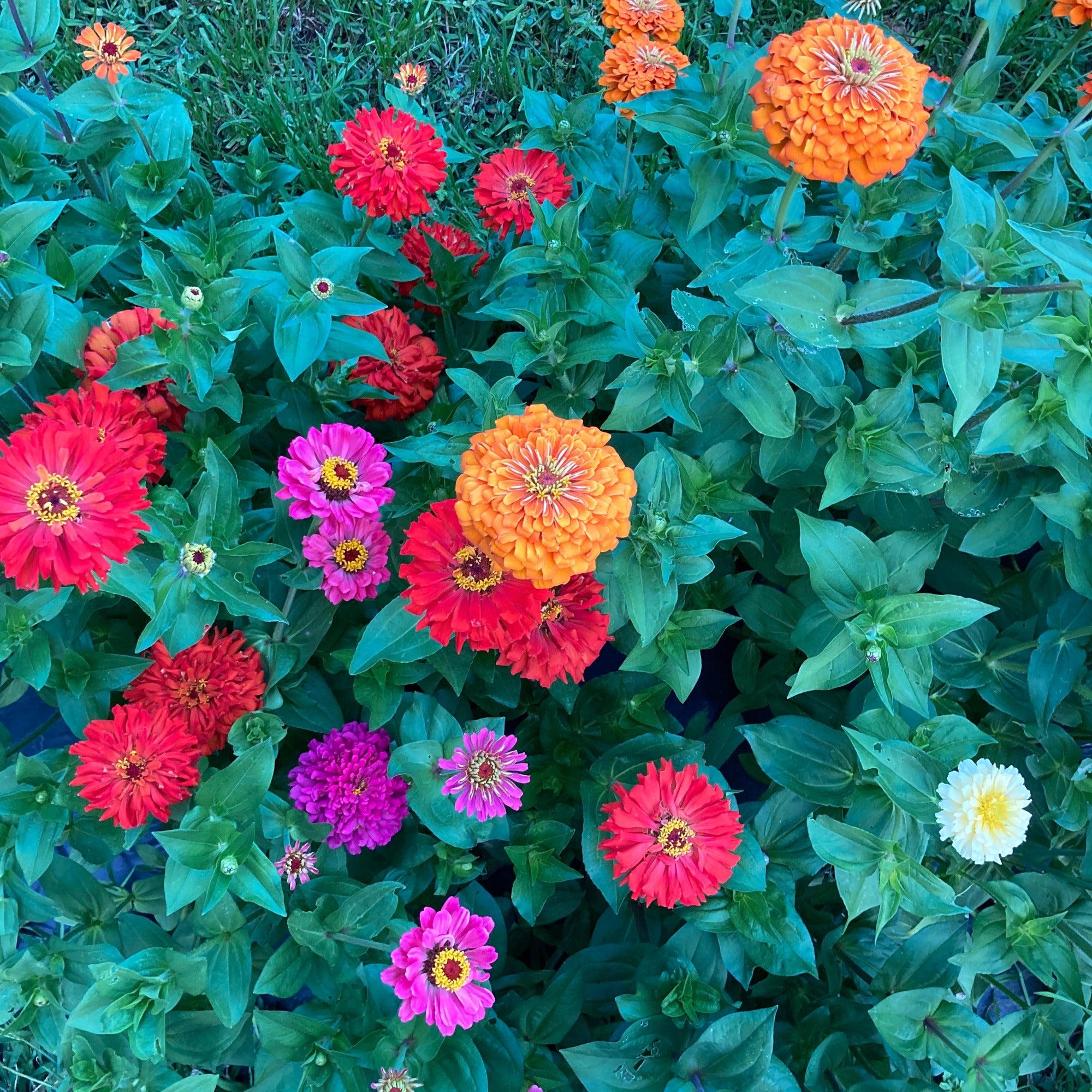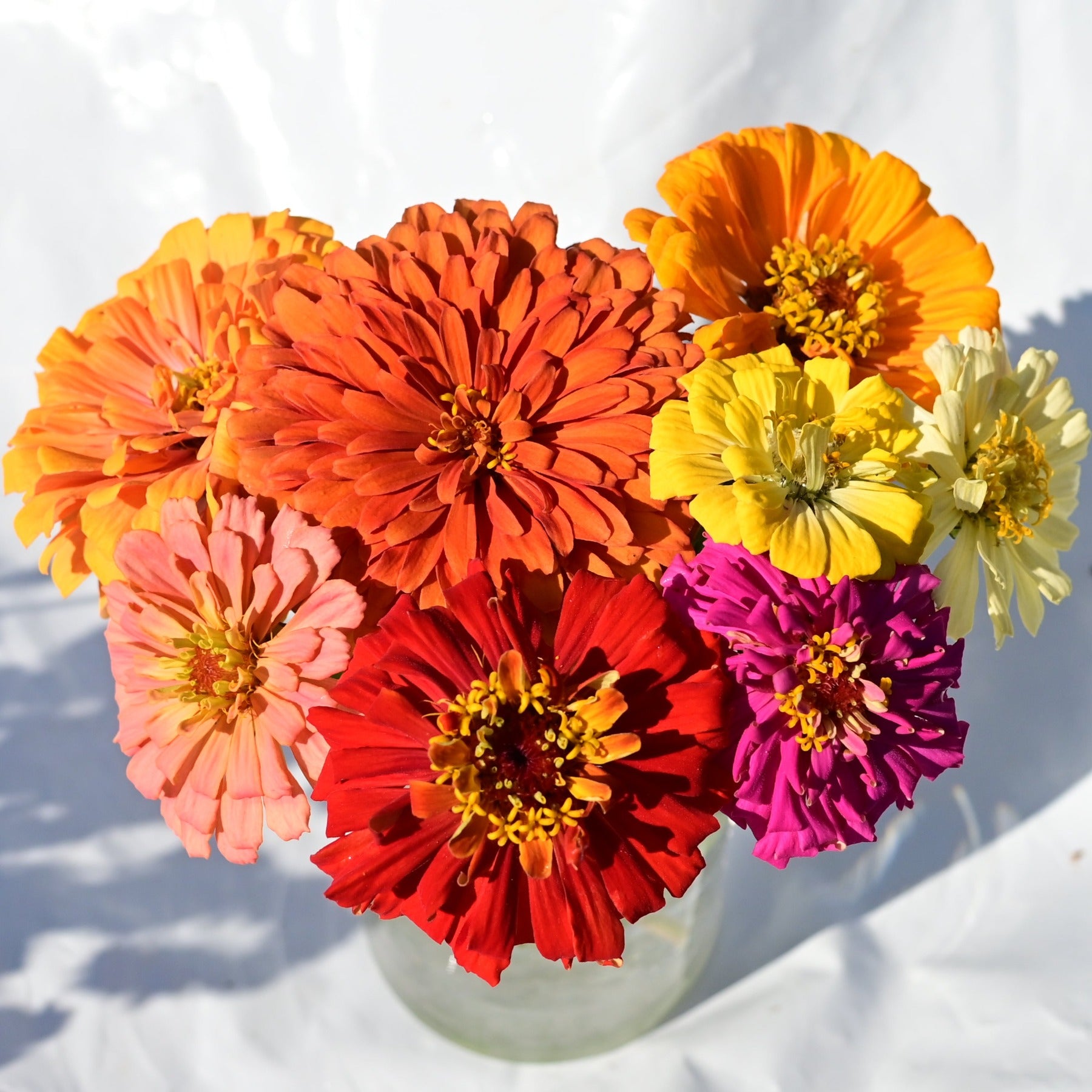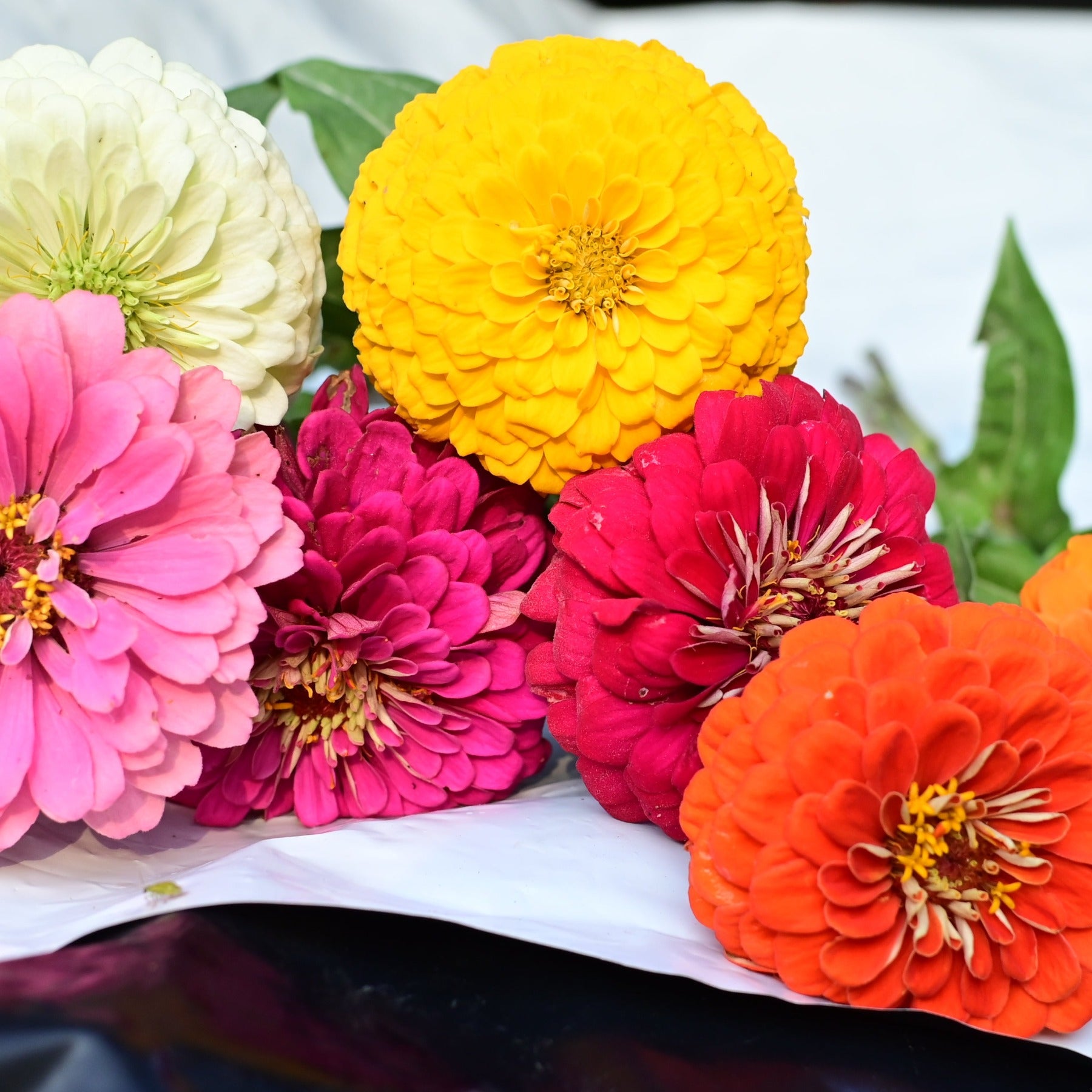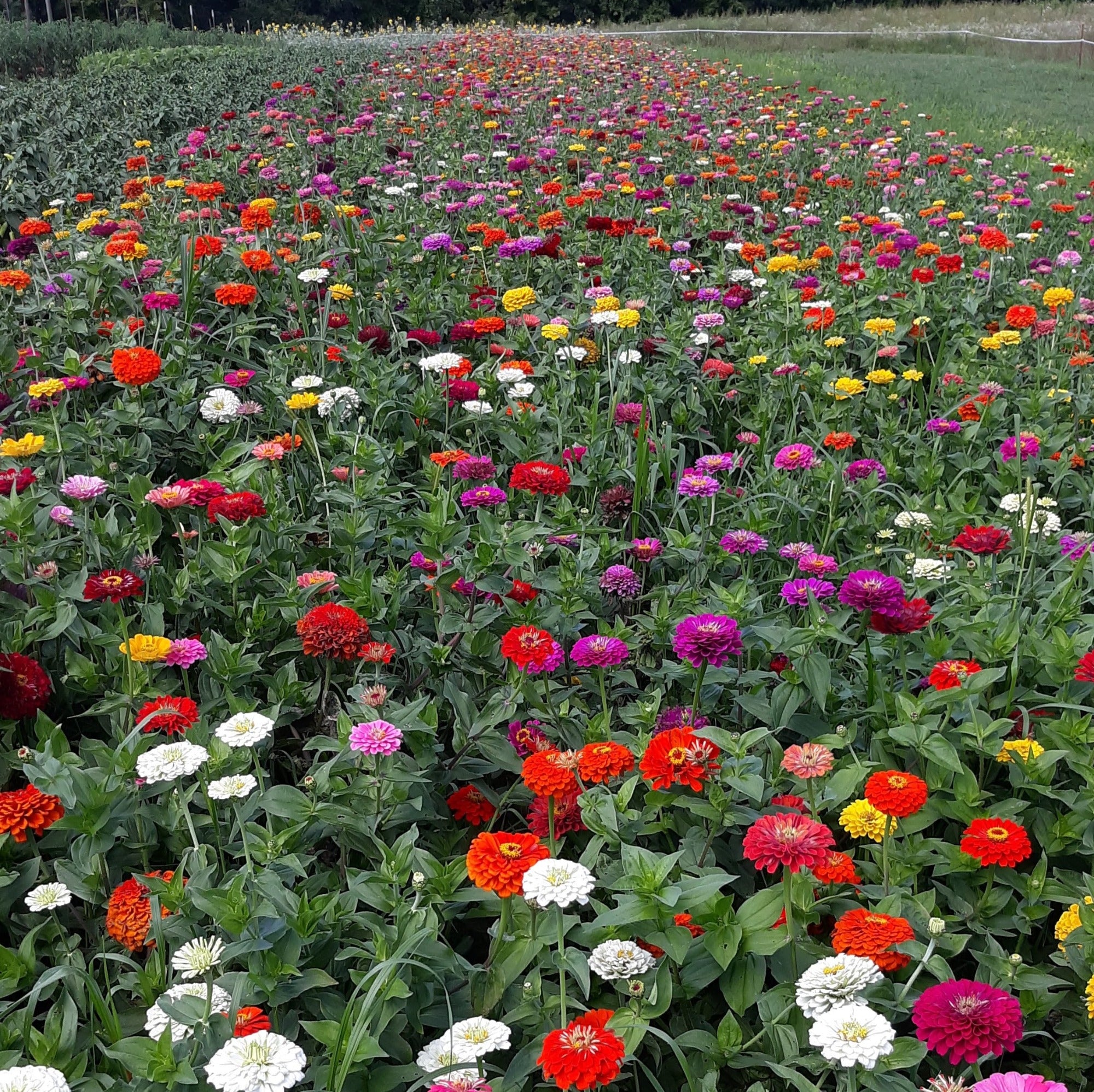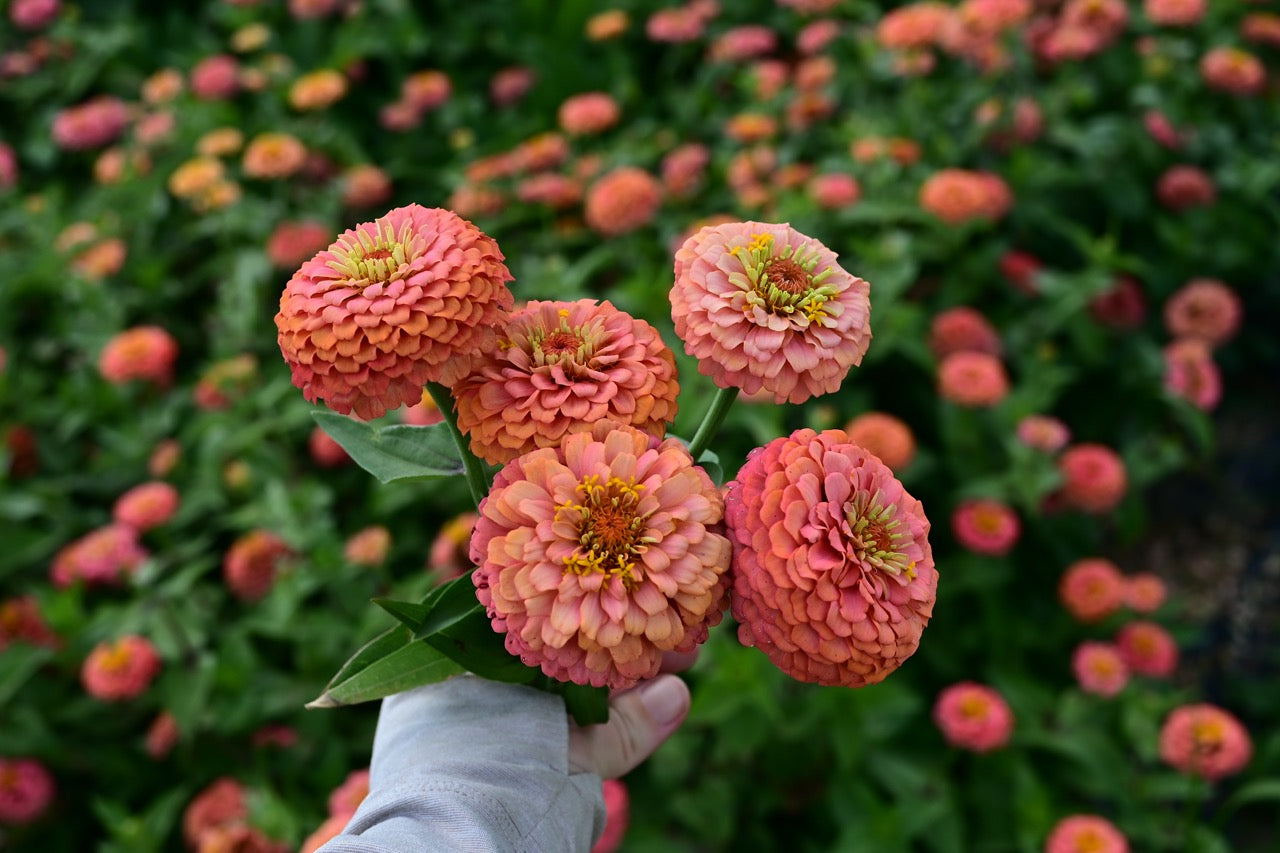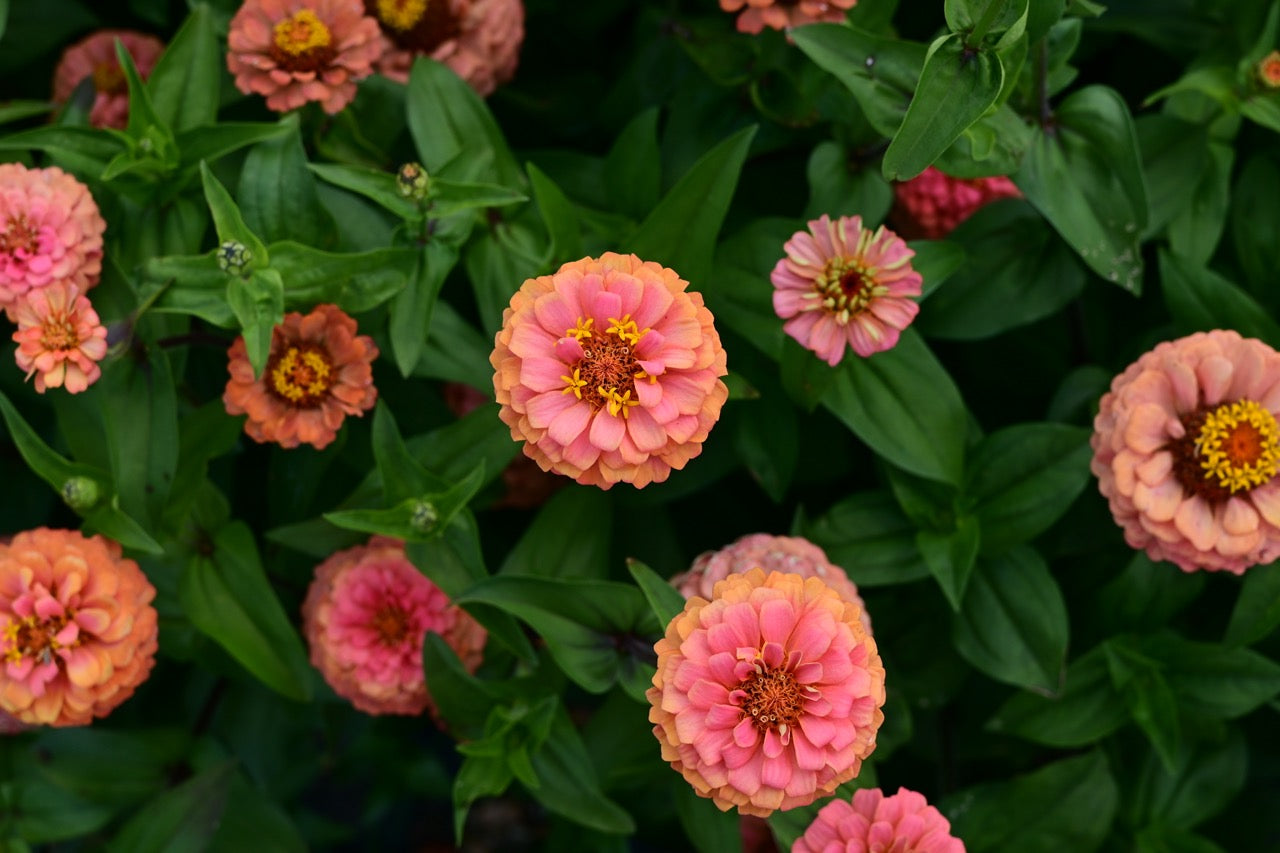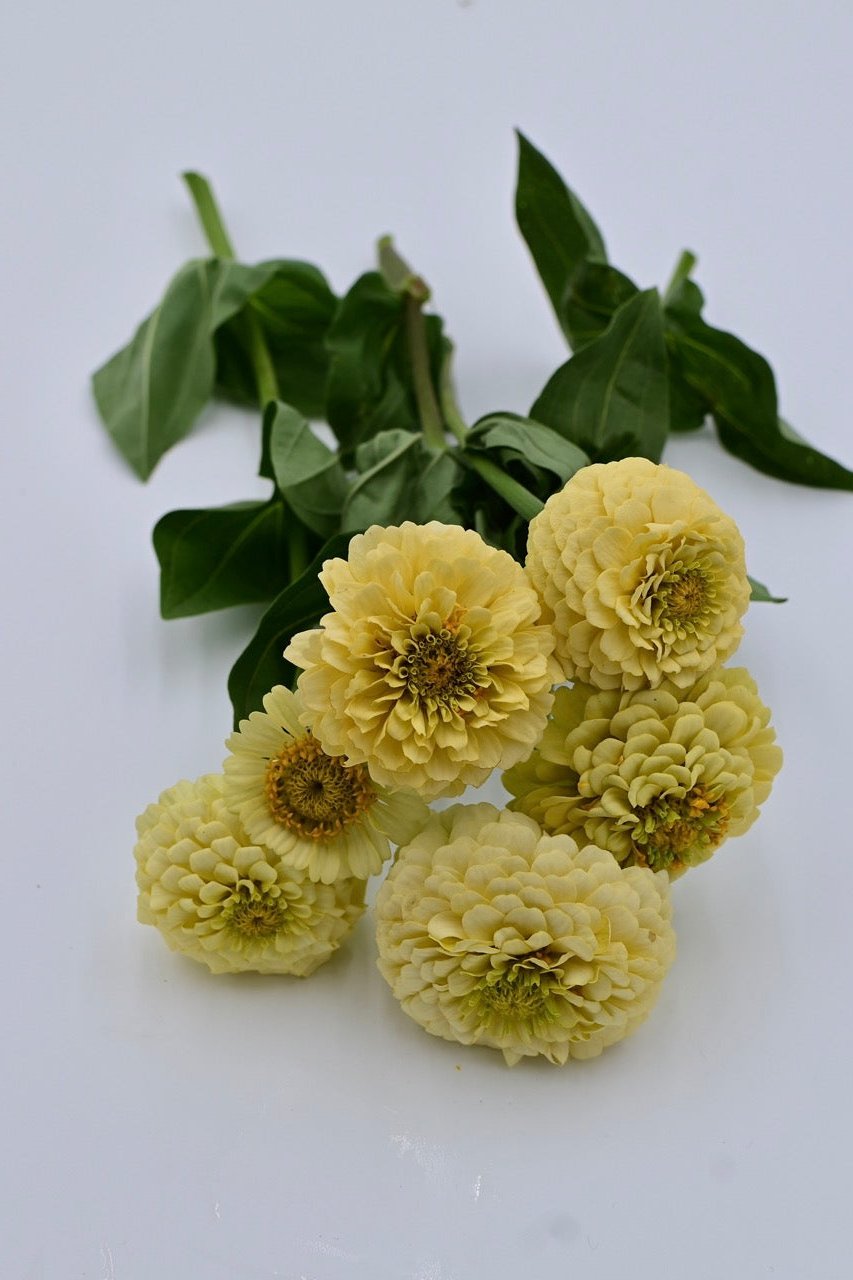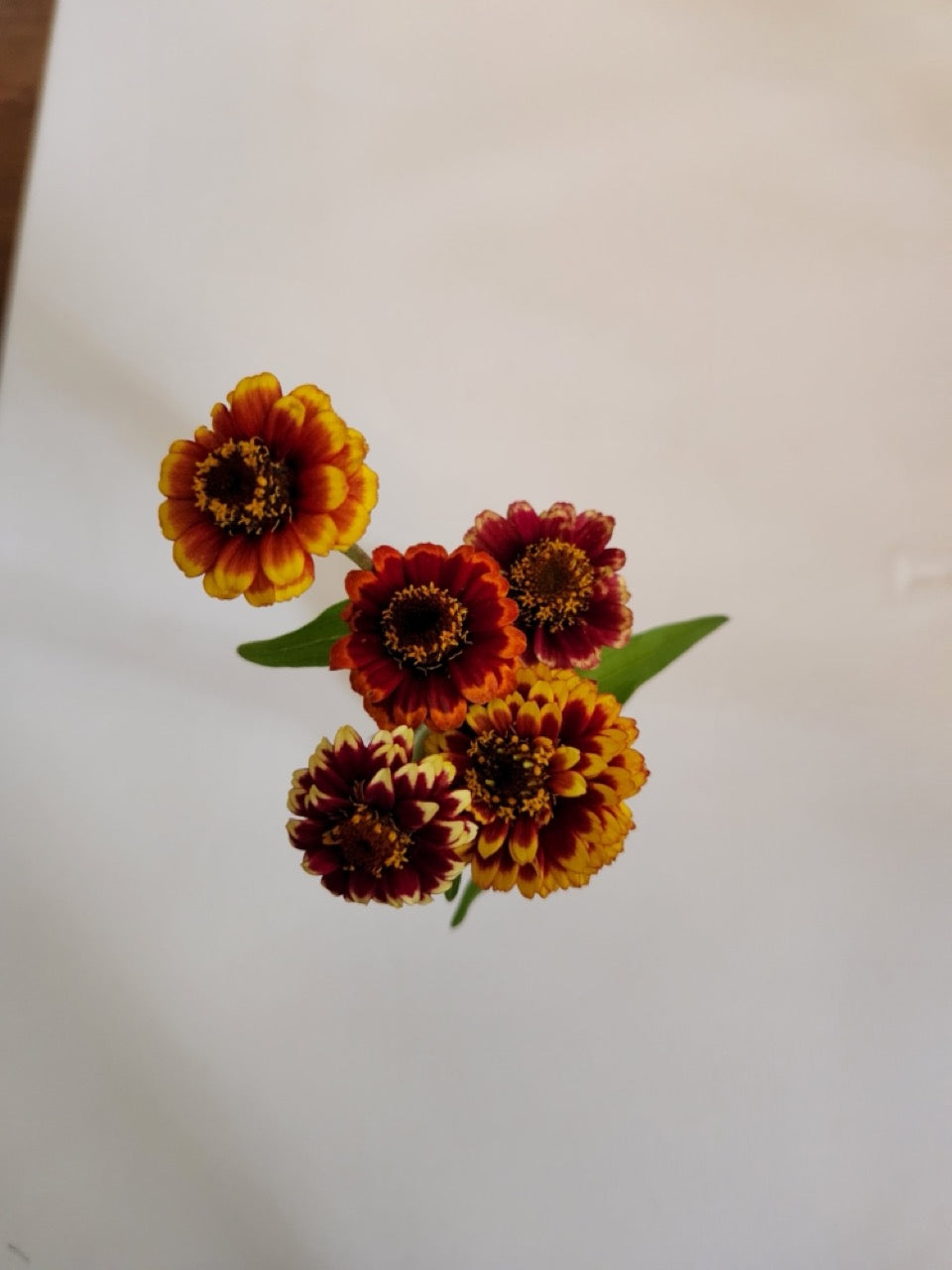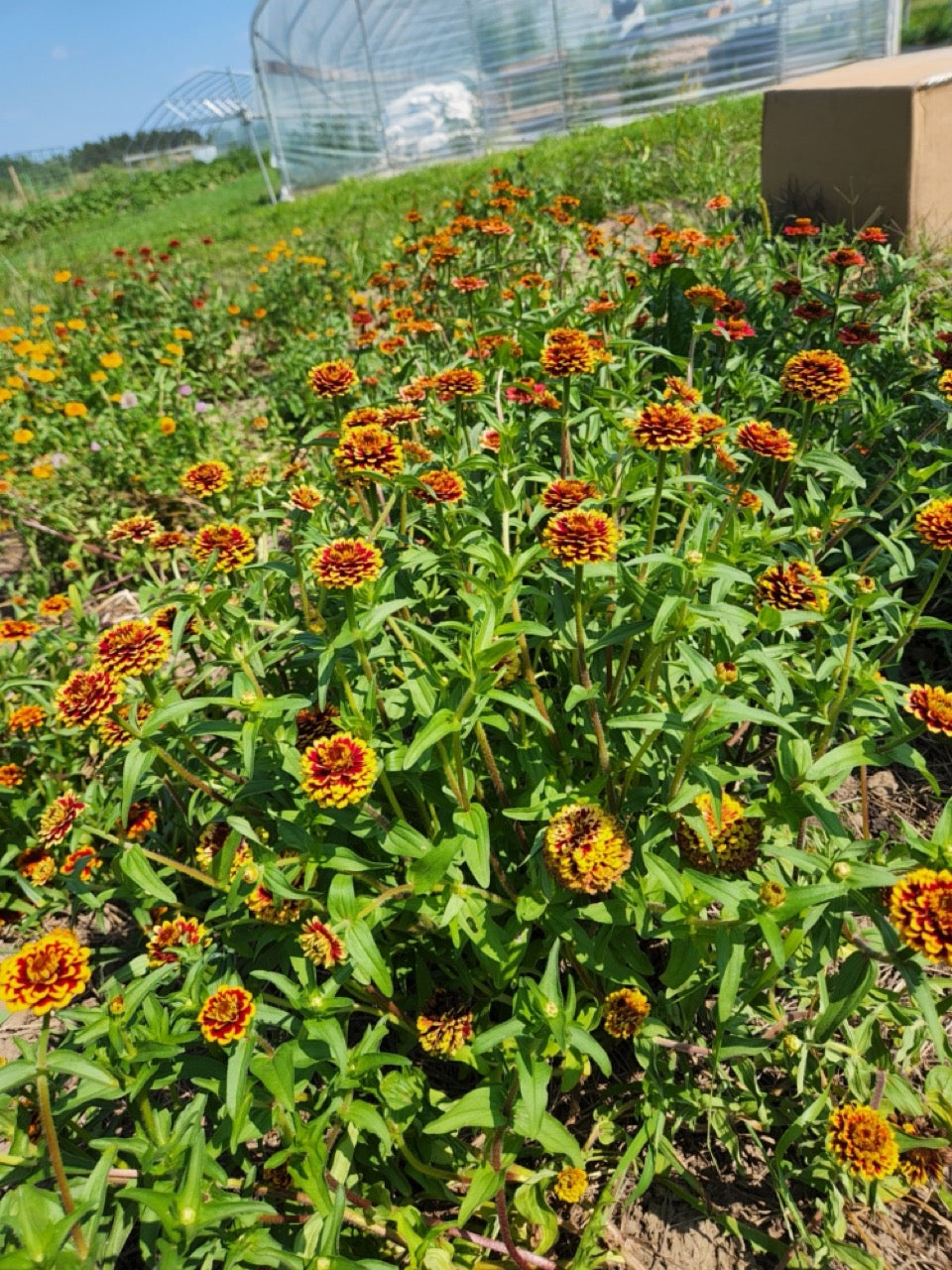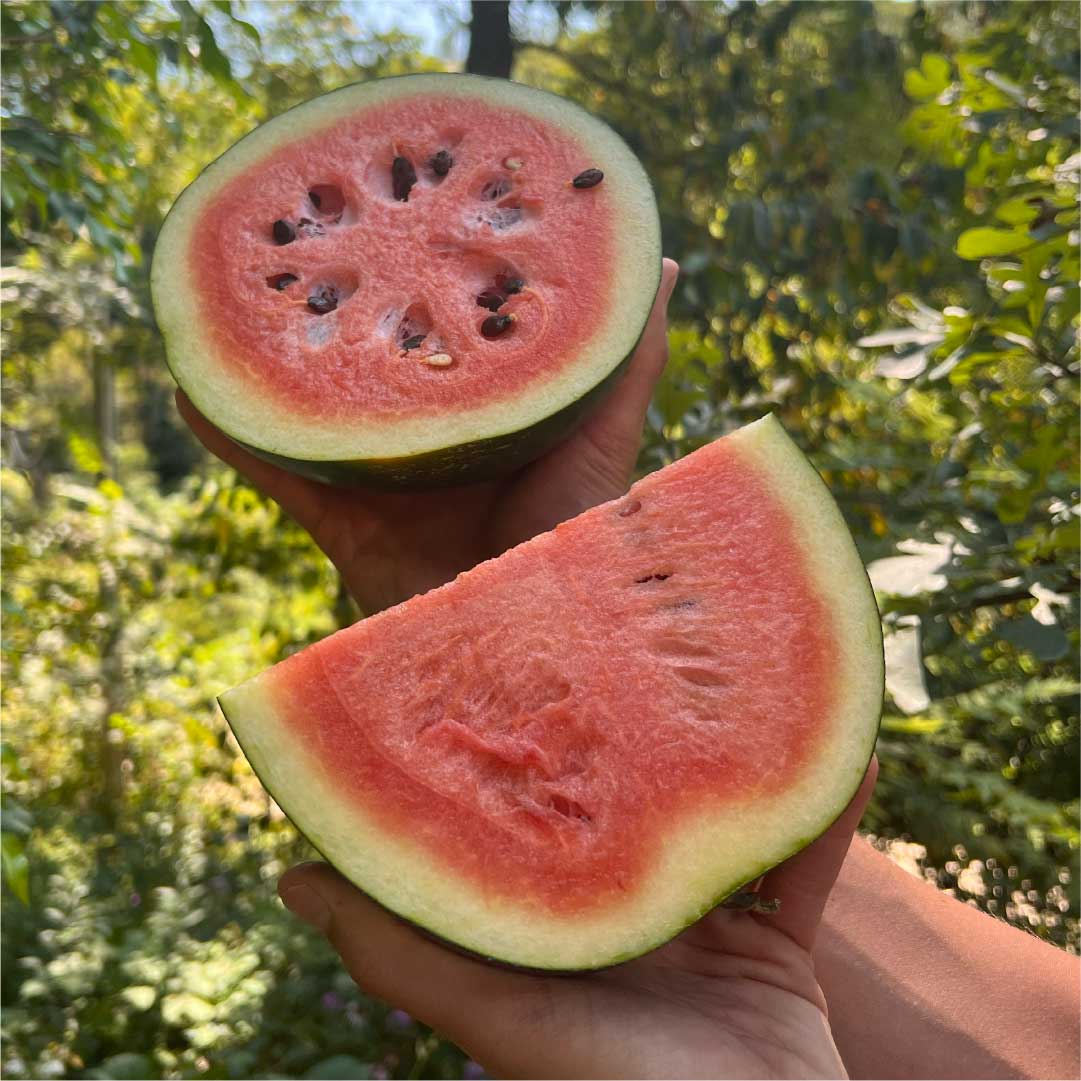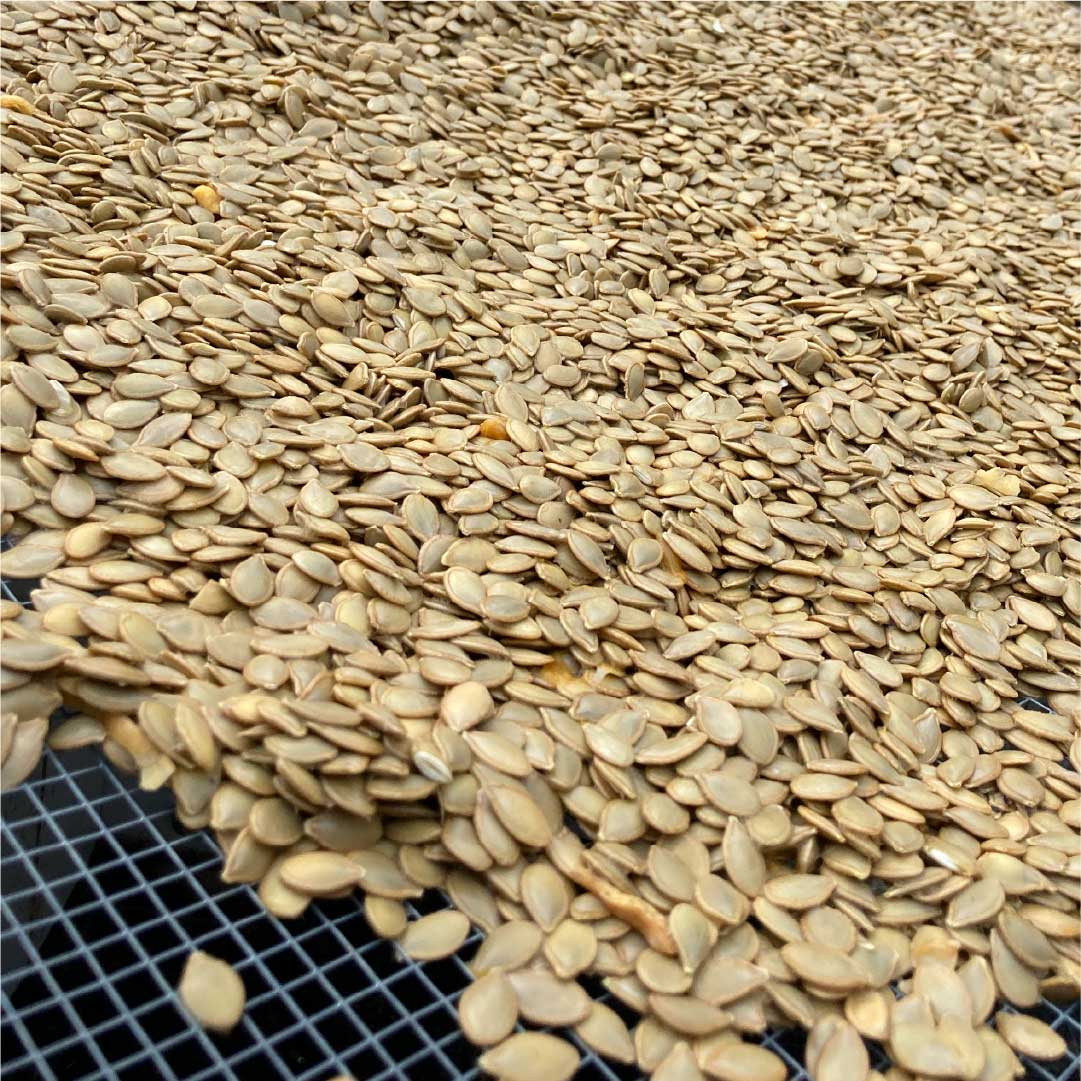
Driftless Seed Supply Grower Resources
Zinnia Growing Resources
Introduction
Zinnias, named after the German botanist Johann Gottfried Zinn, originated in Mexico and were introduced to Europe in the early 18th century. Initially, they were regarded as unattractive due to their wild form. However, selective breeding over the centuries transformed them into popular ornamental flowers known for their vibrant colors and diverse shapes. In their native Mexico, zinnias hold cultural significance, symbolizing the remembrance of departed souls, and are often used in Day of the Dead celebrations. Globally, these flowers have become a staple in gardens and floral arrangements, admired for their beauty and ease of cultivation. The evolution of zinnias from their humble beginnings to garden favorites reflects both botanical advancement and changing aesthetic appreciations in horticulture. Their ease of cultivation and wide range of colors make them a staple among gardeners and florists.
Variety Selection
- Tall Varieties: Ideal for cut flowers. Examples include 'Benary's Giant', 'Oklahoma', and 'State Fair'.
- Dwarf Varieties: Suitable for borders and containers. Examples include 'Thumbelina' and 'Dreamland'.
Site Selection and Soil Preparation
- Sun Exposure: Zinnias require full sun.
- Soil Type: Well-drained soil is crucial. Zinnias thrive in loamy or sandy soils.
- Soil pH: Optimal pH is between 6.0 and 7.0.
Planting
- Timing: Plant zinnias after the last frost date.
- Spacing: Sow seeds or plant seedlings 6-24 inches apart, depending on the variety. A final spacing of 12 inches within row and 24 inches between row is ideal.
- Depth: Plant seeds 1/4 inch deep.
Irrigation
- Watering Needs: Water zinnias deeply but infrequently to encourage deep rooting.
- Avoid Overhead Watering: To prevent leaf diseases, water at the base of the plant.
Fertilization
- Initial Fertilizer: Use a balanced fertilizer at planting. Avoid too much nitrogen, which will encourage excess foliage growth at the expense of blooms. Potassium (K) is crucial in flower structure development.
- Ongoing Nutrition: Side-dress or foliar feed with a balanced fertilizer every 4-6 weeks during the growing season.
Pest and Disease Management
- Common Pests: Aphids and spider mites.
- Disease Prevention: Good air circulation and proper spacing help prevent fungal diseases.
Harvesting for Cut Flowers
If growing for cut flowers, encourage earlier growth of long stems by pinching off the first bud or bloom.
Timing
- Best Stage: Harvest zinnias when the flowers are fully opened but before they start to age. Try using the ‘wiggle test’ to see if they will hold up in an arrangement: hold the stem about 6-8” below the bloom and wiggle the flower - the stem should be stiff and the bloom should not flop too much from side to side.
- Morning Harvest: Cut flowers in the early morning when they are most hydrated.
Technique
- Cutting: Use sharp scissors or pruning shears. Cut above a leaf node or bud.
- Stem Length: For cut flowers, leave long stems, cutting as low as possible.
- Post-Harvest Care: Place stems in water immediately after cutting.
Post-Harvest Handling
- Hydration: Keep cut zinnias in a bucket of water to maintain hydration.
- Cooling: Store in a cool, shaded area before arranging or selling.
- Vase Life: Change water regularly and trim stems to prolong vase life.
Additional Tips
- Deadheading: Remove spent blooms to encourage continuous flowering.
- Succession Planting: Plant new seeds every few weeks for a continuous bloom.
- Trellising: Consider horizontal netting for straighter stems, especially if growing commercially for cut flowers.

